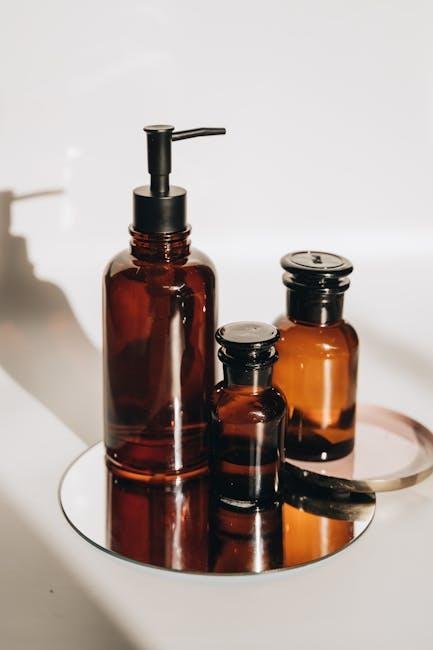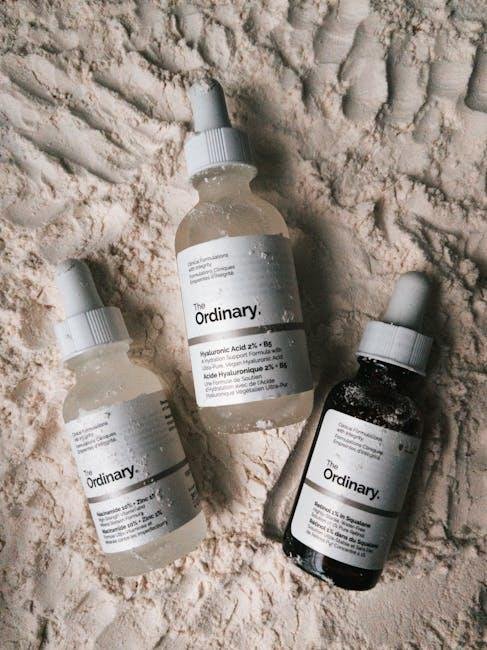In the ever-evolving world of skincare, few ingredients have sparked as much fascination—and confusion—as retinol. A derivative of vitamin A, this powerhouse ingredient promises an array of skin benefits: from smoothing fine lines to enhancing skin tone and texture.Yet, with great potency comes great responsibility. As consumers navigate the aisles of beauty products filled with glowing endorsements and occasionally contradictory advice,it can be challenging to discern what’s fact and what’s fiction. In this article, we’ll explore the truth about retinol, shedding light on its myriad effects, potential pitfalls, and, most importantly, how to incorporate it into your routine safely and effectively. Whether you’re a seasoned retinol user or are contemplating your first foray into its transformative world, join us as we demystify this skincare staple and offer guidance for achieving radiant, healthy skin.
Understanding Retinol: the Science Behind Its Efficacy
Retinol, a derivative of Vitamin A, operates at the cellular level to enhance skin vitality and appearance. Its transformative power stems from its ability to accelerate cell turnover, leading to a smoother, more radiant complexion. When applied topically, retinol penetrates the skin and encourages the shedding of dead skin cells, revealing fresh, new skin underneath. This process helps reduce the appearance of fine lines, wrinkles, and even hyperpigmentation. moreover, retinol stimulates collagen production, a crucial protein for maintaining skin’s elasticity and firmness, ensuring that your skin not only looks younger but feels healthier as well.
understanding how to incorporate retinol into your skincare routine is essential for maximizing its benefits while minimizing potential side effects. It’s important to start with a low concentration—ideally 0.25%—and gradually increase as your skin acclimates. Some key considerations include:
- Time of application: Apply at night, as retinol can increase sun sensitivity.
- Moisturization: Use a hydrating serum or cream to counteract any dryness or irritation.
- Sunscreen is a must: Protect your skin during the day with broad-spectrum SPF.
Here’s a simple table summarizing the stages of retinol usage:
| Stage | Description |
|---|---|
| Initiation | Start with low concentration; apply 1-2 times a week. |
| Acclimatization | Gradually increase frequency and concentration based on tolerance. |
| maintainance | utilize higher concentrations regularly, always pairing with sunscreen. |

Navigating Common Myths: Separating Fact from Fiction
When it comes to retinol,many myths abound that can confuse and deter potential users. One prevalent misconception is that retinol is only suitable for individuals with severe skin concerns, such as acne or fine lines. In reality, retinol can be beneficial for a variety of skin types and conditions. It works wonders for uneven skin tone, texture issues, and can even enhance the overall radiance of the skin. Regular use can lead to a smoother and more youthful appearance, proving that its effects are not limited to those with pronounced skin concerns.
Another common myth suggests that higher concentrations of retinol yield faster results. While it might seem logical, this approach can lead to adverse reactions, such as irritation or peeling. It’s essential to start with a lower concentration and gradually increase usage as your skin adapts. below is a simple guide to retinol concentrations and their suitable uses:
| Retinol concentration | Recommended For |
|---|---|
| 0.25% – 0.5% | Beginners and sensitive skin types |
| 0.5% – 1% | Moderate skin concerns,regular users |
| 1%+ | Experienced users,targeted treatments |

Essential Guidelines for Safe Retinol Use
When incorporating retinol into your skincare routine, it’s essential to start slowly to allow your skin to adjust.Begin with a low concentration (0.25% or lower) and apply it once or twice a week. Gradually increase the frequency as your skin builds tolerance. Always apply retinol at night, as it can increase sun sensitivity. Ensure to use a broad-spectrum sunscreen during the day to protect your skin from UV damage.
Pay attention to your skin’s reaction when using retinol. Common initial side effects include redness, peeling, and dryness.if these symptoms become severe, reduce the frequency of use. It’s also advised to avoid combining retinol with other strong active ingredients, such as AHAs and BHAs, to prevent irritation. A moisturizer can help mitigate these side effects, creating a protective barrier, and keeping your skin hydrated.

Maximizing Results: Pairing Retinol with the Right Skincare Routine
Integrating retinol into your skincare routine can yield remarkable results, but pairing it with the right supporting products is essential for maximizing its benefits. Start with a gentle cleanser that removes impurities while maintaining your skin’s natural barrier. This prepares your skin for active ingredients. Follow up with a hydrating toner to balance your skin’s pH levels and a serum containing hyaluronic acid to lock in moisture. Remember to give your skin adequate time to absorb each product before applying the next to avoid any irritation.
Moisturization is a crucial step when using retinol,especially as it can cause dryness and flakiness. Opt for a rich moisturizer that includes emollients and occlusives,helping to soothe and protect the skin. additionally, sunscreen should become a non-negotiable part of your daytime routine, as retinol can make your skin more sensitive to UV rays. Here’s a fast reference table for your ideal pairing:
| Step | Product type | Key Benefit |
|---|---|---|
| Cleanser | Gentle Cream or Gel | Removes impurities without stripping moisture |
| Toner | Hydrating Toner | Maintains pH balance |
| Serum | Hyaluronic Acid | boosts hydration |
| Moisturizer | Rich Cream | Soothes and protects |
| Sunscreen | SPF 30 or higher | Prevents sun damage |
Key Takeaways
In the ever-evolving world of skincare, retinol stands out as a beacon of scientific innovation, promising to revolutionize our approach to youthful, vibrant skin. While the buzz surrounding this powerhouse ingredient can be enticing, it’s vital to navigate its use with informed caution. Armed with knowledge about the potential benefits, possible side effects, and proper application techniques, you can confidently incorporate retinol into your skincare regimen.
As you embark on this journey to enhance your skin’s health, remember that consistency, patience, and patience are key. Every skin type is unique, and what works for one may not work for another. By tailoring your routine to your individual needs and taking the time to listen to your skin, you’ll unlock the transformative potential of retinol without compromising safety.
Ultimately,the truth about retinol is not just about the ingredient itself but about understanding how to harness its power responsibly. So, take the plunge, tread thoughtfully, and let the glow of your skin tell the story of your skincare commitment.



